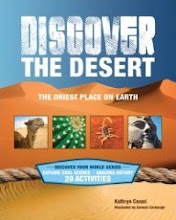Not being thrillseekers in general, we only made our first trip as a family to a “big kid” amusement park, The Great Escape in
The idea of amusement parks goes back to ancient
If you’re a roller coaster fan, the Roller Coaster DataBase has information and statistics on over 1800 roller coasters worldwide. The site Joyrides is a bit out of date, sadly, but contains excellent still photos of some
Of course, you don’t have to leave your computer to experience the ride of your life. Build your own coaster on the Travel Channel theme parks page, using loops, corkscrews and boomerangs, and then see how it scores on the Fear-o-Meter. Funderstanding’s simulation lets you see how thrilling you can make your coaster without sending the riders into outer space. Set the height of the hills, the size of the loop, the speed and mass of the cars, the amount of friction on the track -- even how much gravity your park has – and then let ‘er rip. Learn how rides work and why they’re scary in the Physics of Amusement Park section of the animated Virtual Science Center
There’s do-it-yourself, and then there’s people who design their own real-life amusement park rides. All the animals on the Totally Kid Carousel in
Food is a big part of the park experience. Cotton candy’s been around since the 1890s, and Nathan’s hot dogs are still a boardwalk favorite. But if you grew up in the sixties the fries from
Family Online Picks:
The Great Escape (www.sixflags.com/parks/greatescape/)
Midway Plaisance (www.icewind.net/themepark)
Theme Park Insider (www.themeparkinsider.com)
MouseSavers (www.mousesavers.com)
Roller Coaster DataBase (www.rcdb.com)
Joyrides (www.joyrides.com)
CoasterRadio (www.coasterradio.com)
TravelChannel (http://travel.discovery.com/ideas/themeparks/rollercoasters/buildacoaster.html)
Funderstanding (www.funderstanding.com/k12/coaster)
Virtual Science Center (http://jvsc.jst.go.jp/find/rikigaku/english/index.htm)
ThinkQuest (http://library.thinkquest.org/2745/data/meter.htm)
Totally Kid Carousel (http://www.hoopla.org/Carousel/index.htm)
Blue Flash video (www.thrillnetwork.com/boards/attachment.php?attachmentid=11322)
Palisades Amusement Park (www.palisadespark.com)

